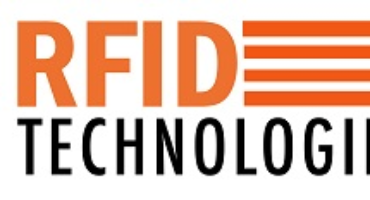How RFID UHF RAIN Works:
RFID Reader sends out UHF radio waves to activate and communicate with RFID tags.
RAIN RFID Tags receive the signal and transmit back their unique ID and stored data.
RFID Software processes the information, enabling asset tracking, inventory management, and security applications.
Advantages of using RAIN UHF RFID:
Longer Read Range – Can read tags from up to 10–15 meters (30–50 feet).
High-Speed Reading – Can scan hundreds of tags per second.
Low Cost & Scalability – Passive UHF RFID tags are inexpensive and ideal for large-scale tracking.
Global Standard – Uses open standards (EPC Gen2) for interoperability across industries.
Common Applications of RAIN UHF RFID Technology:
Supply Chain & Logistics – Tracks shipments and inventory in warehouses and retail.
Retail & Inventory Management – Automates stock tracking and reduces shrinkage.
Healthcare – Identifies medical equipment, patients, and pharmaceuticals.
Access Control & Security – Used in ID badges for personnel tracking and secure entry.
Manufacturing – Enables real-time visibility of production processes.
RAIN RFID is widely adopted for its high performance, automation capabilities, and cost-effectiveness.
How UHF RFID Technology Ensures Compliance with Real-Time Data to enhance traceability using RFID labels and tags can store a wealth of information about a product, including its origin, manufacturing details, and handling history
How UHF RFID Technology Ensures Compliance with Real-Time Data and Enhances Traceability
UHF RFID (Ultra-High Frequency Radio Frequency Identification) technology plays a crucial role in ensuring compliance and improving traceability by providing real-time data on assets, inventory, and supply chain movements. RFID labels and tags store vital product information, such as origin, manufacturing details, and handling history, making them essential for industries that require strict regulatory compliance.
How UHF RFID Enhances Traceability and Compliance
Automated Data Capture:
RFID readers automatically scan multiple items at once without direct line-of-sight.
Reduces human errors in data entry and inventory tracking.
Real-Time Data Visibility:
Provides instant updates on item locations, status, and movements.
Helps companies maintain audit trails for compliance purposes.
Comprehensive Product History:
RFID tags store detailed information about a product, including:
Origin & Manufacturer Details
Date of Production & Expiry
Storage Conditions & Handling Logs
This ensures compliance with regulations such as FDA, ISO, and GS1 standards.
Automated Compliance Checks:
Businesses can set alerts for expired, misplaced, or damaged goods.
Helps meet industry regulations for product safety, food traceability, and pharmaceutical tracking.
Enhanced Security & Anti-Counterfeiting:
Unique RFID identifiers prevent fraud by ensuring product authenticity.
Helps comply with customs and international trade regulations.
Industry Applications for Compliance & Traceability:
Pharmaceutical & Healthcare – Ensures drug traceability under DSCSA & EU FMD regulations.
Food & Agriculture – Tracks perishable goods, ensuring compliance with FSMA & HACCP.
Retail & Manufacturing – Provides accurate inventory records for audits and recalls.
Automotive & Aerospace – Tracks critical parts and maintenance history.
By integrating UHF RFID technology, businesses gain real-time tracking, automated compliance verification, and improved operational efficiency, ensuring they meet industry standards while reducing risks.
Would you like insights on specific RFID hardware for compliance management?
This is for informational purposes only. For medical advice or diagnosis, consult a professional.
UHF RFID (Ultra High Frequency Radio Frequency Identification) technology plays a crucial role in ensuring compliance with real-time data to enhance traceability. Here's how it works:
1. Unique Identification:
UHF RFID tags, attached to products or items, store a unique identification number (UID). This UID acts like a digital fingerprint, distinguishing each item from all others.
2. Real-Time Data Capture:
UHF RFID readers can quickly and accurately capture data from tags within a range of several meters, without needing a direct line of sight. This allows for real-time tracking of items as they move through the supply chain.
3. Data Storage and Integration:
The captured data, including the UID, time, and location, is stored in a database. This data can be integrated with other systems, such as enterprise resource planning (ERP) or warehouse management systems (WMS), to provide a comprehensive view of the supply chain.
4. Enhanced Traceability:
By tracking items at each stage of the supply chain, from manufacturing to delivery, UHF RFID enables end-to-end traceability. This allows businesses to quickly identify the location of products, track their movement history, and verify their authenticity.
5. Compliance and Transparency:
Real-time data capture and traceability help businesses comply with regulations and industry standards. It also enhances transparency by providing consumers with information about the origin and journey of products.
6. Benefits of UHF RFID for Traceability:
Improved Accuracy: UHF RFID eliminates manual data entry errors, ensuring accurate tracking of items.
Increased Efficiency: Real-time data capture automates processes, reducing the time and labor required for tracking.
Enhanced Security: UHF RFID tags can be encoded with anti-counterfeiting measures, protecting against fraud.
Better Visibility: Real-time tracking provides a clear view of the supply chain, enabling proactive decision-making.
Examples of UHF RFID in Traceability:
Pharmaceuticals: Tracking medications to prevent counterfeiting and ensure patient safety.
Food and Beverage: Monitoring the temperature and location of perishable goods to ensure freshness and quality.
Manufacturing anmd Work0in-Progress (WIP): Tracking components and assemblies to improve production efficiency and quality control.
Retail: Managing inventory, preventing theft, and providing personalized customer experiences.
In summary, UHF RFID technology provides a powerful solution for enhancing traceability by enabling real-time data capture, unique identification, and seamless integration with existing systems. This leads to improved accuracy, efficiency, security, and visibility across the supply chain.

